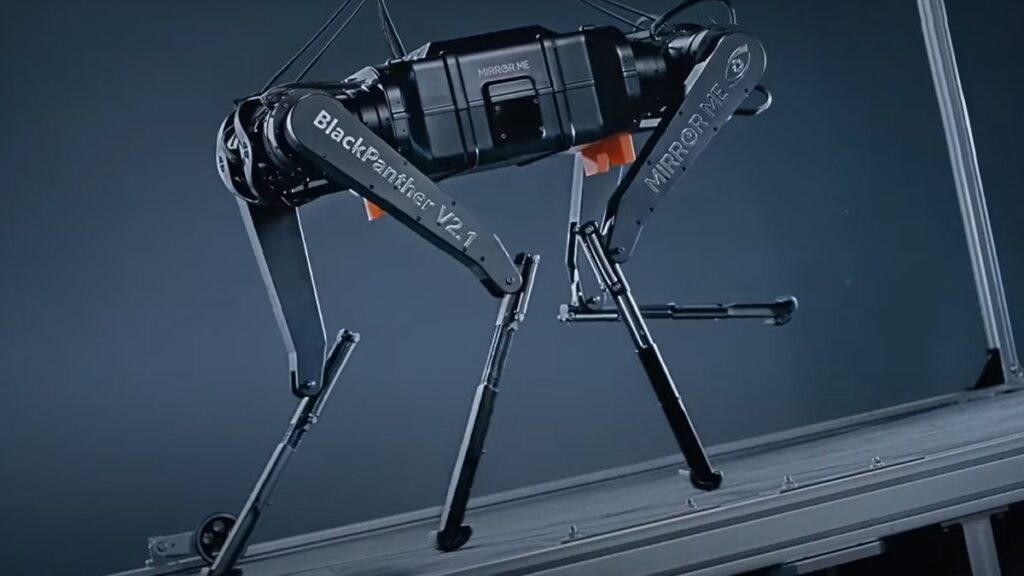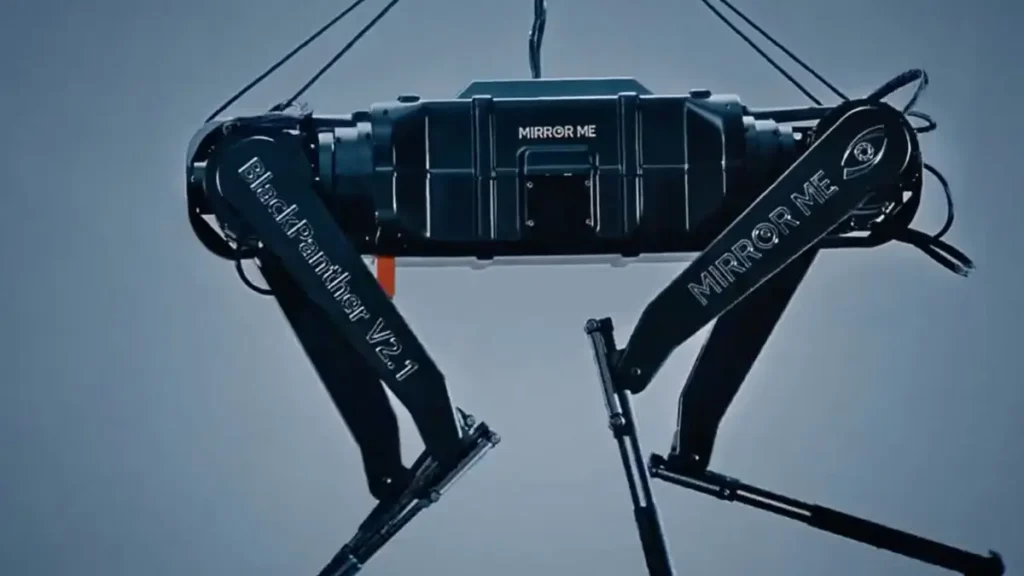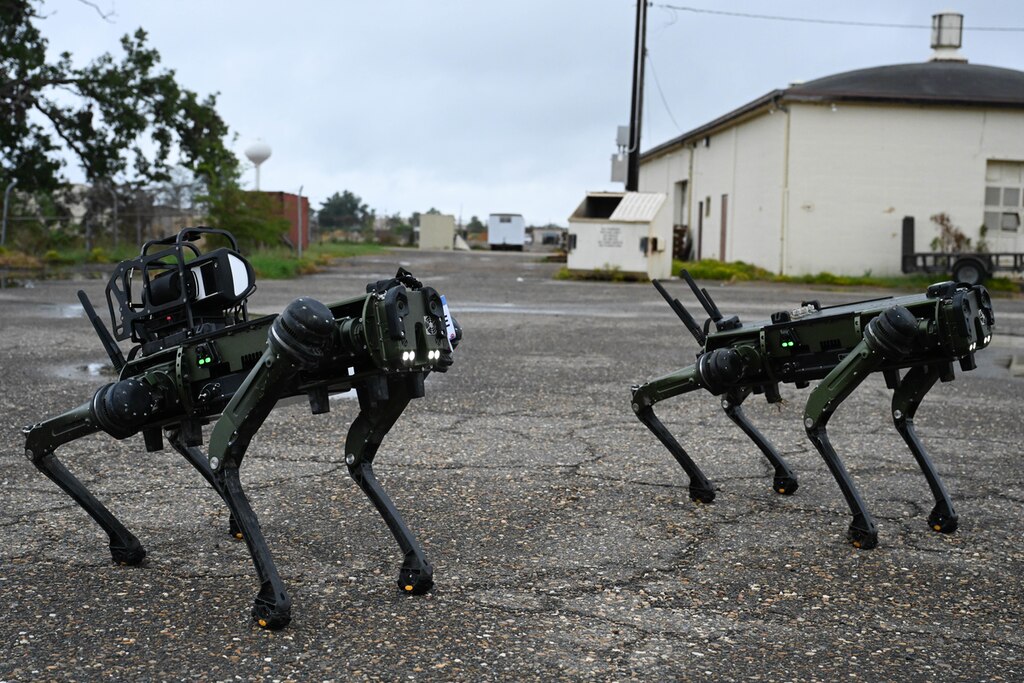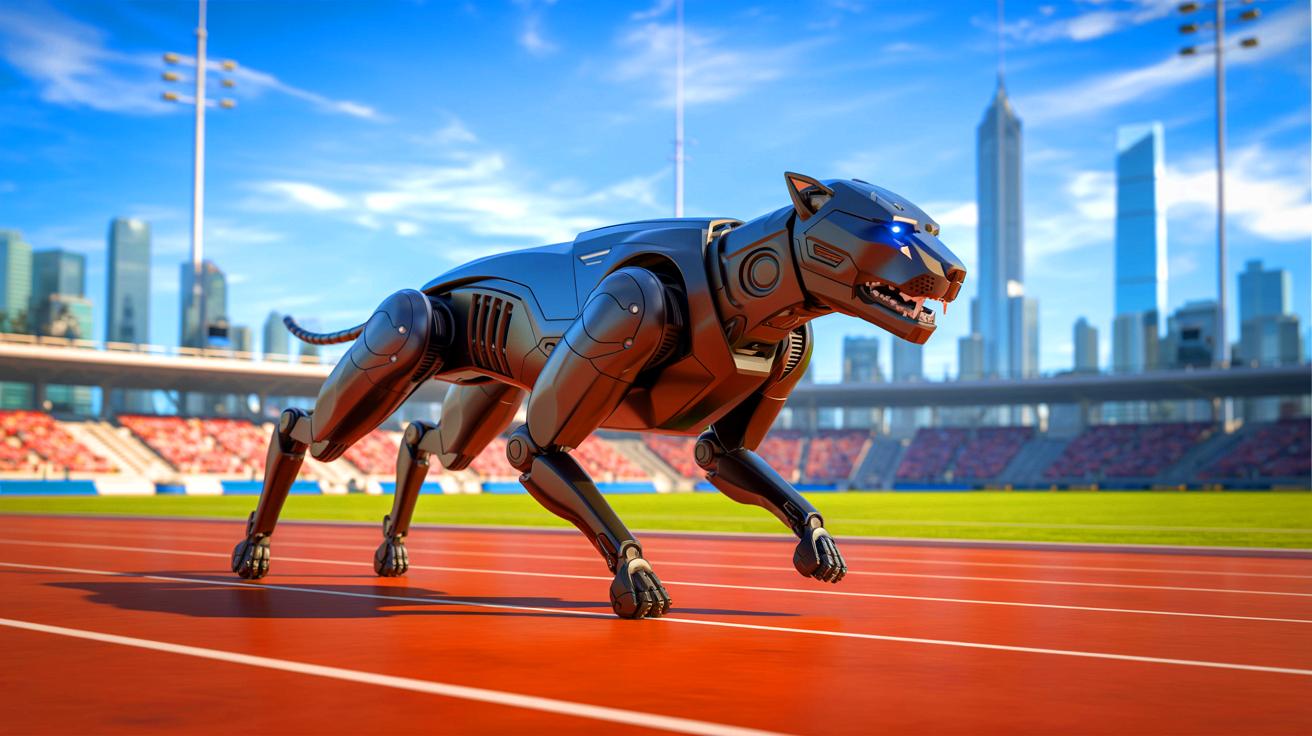In a world where robotics innovation has long been dominated by American companies like Boston Dynamics, China has made a thunderous entrance with its Black Panther robot dog. Unveiled with little warning, this four legged mechanical marvel has not only impressed engineers but left the global tech community astounded with its record breaking capabilities. In just 24 hours, Black Panther smashed performance benchmarks that had taken U.S rivals years to perfect.
This sudden technological leap signals a seismic shift in robotic dog development, redefining the future of agile, autonomous machines used in military, disaster relief, and personal assistance. With a speed that rivals cheetahs and intelligence that mimics real dogs, the Black Panther robot dog is proving to be a game changer in the rapidly evolving field of robotics.
The Rise of China’s Robotics Powerhouse
China’s robotics industry has been advancing steadily for the last decade, but the Black Panther robot dog marks a definitive turning point. Developed by the Hangzhou based company, Unitree Robotics, the Black Panther’s debut performance outpaced Boston Dynamics’ famed Spot in terms of agility, endurance, and load capacity.
Performance Comparison With Spot
A recent side by side field test conducted in Dubai during the International Robotics Expo saw the Black Panther outperform Spot in nearly every measurable aspect. Black Panther clocked 12.5 mph on rough terrain vs. Spot’s 5.2 mph. 4 hours of autonomous operation vs. 1.5 hours for Spot. 25 kg carrying capacity vs. 14 kg.
These metrics aren’t just numbers, they represent years of competitive development. The fact that a Chinese robot dog now holds these records is reverberating through global research centers.

Engineering Excellence Behind the Black Panther
According to lead engineer Dr. Chen Zhao, “The Black Panther was built with next gen algorithms that combine reinforcement learning, neuromorphic computing, and bio mimicry.”
Its balance system, modeled after a panther’s spine and tail coordination, uses AI to make micro adjustments in real time giving it unmatched stability on challenging terrains. In a demonstration video, the Black Panther robot dog was seen navigating icy slopes, jumping between uneven surfaces, and even righting itself mid air after a push feats that Boston Dynamics’ Spot had difficulty performing consistently.
Expert Opinions Signal a Shift in Global Tech Balance
Dr. Matthew Kline, a roboticist at MIT and long time observer of Boston Dynamics, described the debut as “a moment of technological reckoning.” “What China has done with Black Panther is a culmination of years of silent but aggressive R&D. This could very well be the Sputnik moment for quadruped robotics,” he noted.
Similarly! Professor Wang Lei from Tsinghua University emphasized how China’s state supported AI and robotics sectors are enabling faster experimentation and larger data training models.
Real World Applications Already Underway
Unlike many robotic prototypes that stay in labs for years, the Black Panther robot dog is already in real world use. According to a report by CCTV, the Chinese military has deployed early versions for surveillance and logistics operations in mountainous areas. Its heat sensors, night vision, and ability to carry supplies autonomously have proven invaluable.
A patrol officer stationed in Yunnan shared anonymously, “I used to carry a 20 kg pack uphill. Now, the Black Panther carries it and maps the terrain ahead. It’s like having a loyal K9 who never tires.”
Emergency response teams have also begun trials with the robot dog during earthquake rescue drills. Its ability to traverse rubble, detect survivors using AI-analyzed heat signatures, and deliver supplies has generated optimism about its humanitarian potential.

Implications for US Robotics Industry
Boston Dynamics, once considered untouchable in this field, is now facing increasing pressure. Their team acknowledged the performance of Black Panther robot dog during a recent conference, with CTO Aaron Saunders stating, “We are inspired and challenged. This is what drives innovation.”
However! the challenge goes beyond performance metrics. Black Panther is expected to be sold at a significantly lower cost under $10,000 compared to Spot’s $75,000 price tag. This accessibility could democratize robotic dog usage globally, allowing educational institutions, private security firms, and even households to adopt them.
What This Means for the Future
This breakthrough isn’t just about a faster or stronger robot it’s about redefining the global tech narrative. With China’s Black Panther robot dog accelerating the pace, the next wave of robotics may no longer be led by Silicon Valley but by emerging Chinese cities and universities.
Analysts predict a coming surge in Asian led robotics, with India, South Korea, and Japan also ramping up investments. But China’s early lead in AI integration, lithium battery optimization, and biomimetic engineering gives it a distinct edge.

A Leap Beyond Competition
The arrival of the Black Panther robot dog is more than just a win for China it’s a wake up call for the global tech industry. What was once thought to be decades away has arrived overnight. Agile, smart, rugged, and affordable, Black Panther has left competitors scrambling.
As the world watches, one thing becomes clear: the race is no longer about who can build the best robot dog it’s about who can build the future.


1 thought on “China’s Black Panther Robot Dog Surpasses Boston Dynamics in Unprecedented Leap”